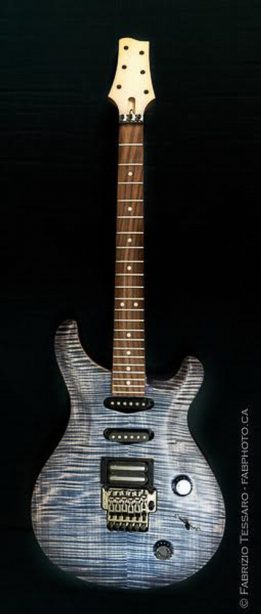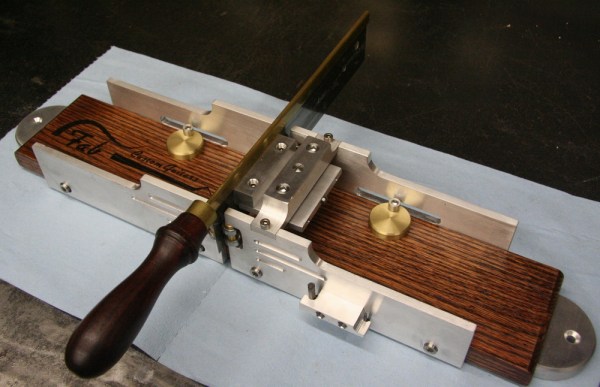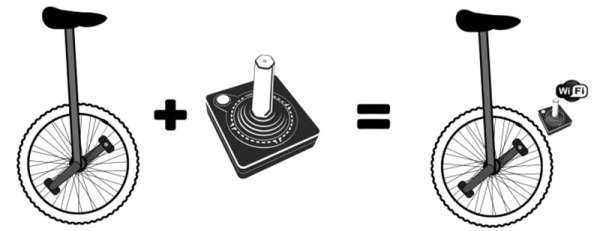 Cutting the slots in a guitar’s neck for the frets requires special tooling, and [Gord]’s contribution to his friend’s recent dive into lutherie was this lovingly engineered and crafted fret mitering jig. We’d love to have a friend like [Gord].
Cutting the slots in a guitar’s neck for the frets requires special tooling, and [Gord]’s contribution to his friend’s recent dive into lutherie was this lovingly engineered and crafted fret mitering jig. We’d love to have a friend like [Gord].
We’ve covered a number of [Gord]’s builds before, and craftsmanship is the first thing that comes to mind whether the project is a man-cave clock or artisanal soaps. For this build, he stepped up the quality a notch – after all, if you’re going to build something you could buy for less than $200, you might as well make it a thing to behold.
There’s plenty to feast the eyes on here – an oak bed with custom logo, the aluminum jig body with brass accents, and the precision bearings that guide the pricey backsaw. Functionality abounds too – everything is adjustable, from the depth of cut to the width of the saw blade. There’s even a place to store the adjustment tool.
The result? Well, let’s just say that [Gord] and his friend [Fabrizio] are kindred spirits in the craftsmanship department. And [Fab]’s not a bad axeman either, as the video below shows.
Continue reading “Engineering Meets Craftsmanship In This Guitar Fretting Jig”
















